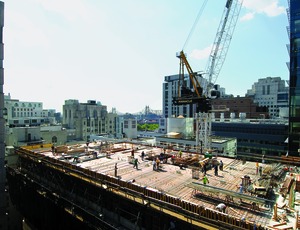
The U.S. market for education-related construction remains in the doldrums due to the weak economy and still-tightening state and local budgets, say representatives of many public school districts, colleges and universities.
But there are rays of hope. Some localities that have suffered less from the economic bust continue to fund major projects, and numerous higher-education jobs are advancing to construction thanks in large part to private-sector donations.
Dwindling Dollars
However, much of the news is bleak. “In our current five-year capital spending plan we are planning only one new school,” a 900-student elementary school scheduled to open in fall 2014, says Cathy Valdes, chief facilities officer for Hillsborough County Public Schools, a 195,000-student school district in Tampa.
In contrast, she says, the district built a total of 60 new schools between 1996 and 2005.
“We had been adding 5,000 to 6,000 students a year” during Tampa's boom time, Valdes said. Now, regional population growth has flattened out, a significant number of students has been shifted to charter schools, and the collapse of home prices has reduced valuations and slashed the property tax revenues that help to support school construction and operations.
No new schools are being planned by the Sacramento City Unified School District, says Crystal Hoff, planning technician for the school district in California's capital city, which, like Tampa, was hit hard by the housing bust. These days, Sacramento is focused on two areas: renovation projects to improve schools in low-income areas and to enhance energy efficiency.
Bright Spots
The outlook is a little better in Fairbanks, Alaska, where school construction got a boost on Oct. 5 when area voters approved two bond issues totaling $20.3 million. To be spent largely in 2013-14, the money will be used to renovate two elementary schools, two middle schools and North Pole High School, says David Ferree, assistant superintendent for facilities management at Fairbanks North Star Borough School District.
“We haven't been hit as hard as some parts of the Lower 48. We never had the housing boom and bust. But still, it has been tougher to get the funding we need” for important school projects, Ferree says, adding that the newly approved bonds will help.
The situation is better still at Fairfax County Public Schools, a large school district in a prosperous suburban area just outside of Washington, D.C.
There, a new elementary school and middle school are currently under construction. “We're bidding 12 or 13 [renovation or expansion] projects, most of them in the $2-million to $4-million range,” says Kevin Sneed, the district's director of design and construction.

Post a comment to this article
Report Abusive Comment